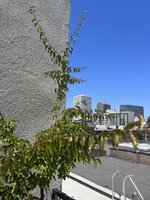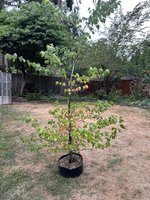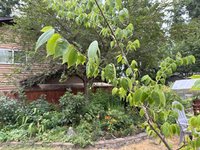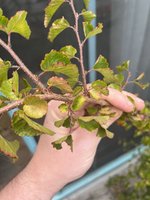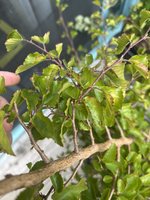Akadama break down is quite normal and in many ways a good thing over time, as it scales with your roots. I definitely would not try and replace soil at this time of year personally-esp if it's really hot like it usually is in many parts of the bay. I'd make sure the tree was under shade cloth and ensure that the root ball is really getting saturated. I'd make several passes with the watering wand, I may even add duct tape or plastic along the rim of the pot so water sits on top of the soil and has time to penetrate the heart of that root ball. I'd def wait until Jan-March in CA to repot. If you try and replace soil now, you'll likely do more harm than good in damaging roots.
The funky leaves could be a fungal issue, sun burn or a watering issue-hard to tell esp from a small pic. You'll want a balance of water and oxygen, meaning water the tree and ensure water is really penetrating the entire root ball, but then also letting it dry properly and to the correct moisture content before watering again. Often when repotting Korean Hornbeam, we won't full bare root, Ryan Neil would classify these as a Sheen Based Deciduous. I love Korean Hornbeams! Hope this one continues to grow well for you, they generally do well in the Bay! Jonas won a PBE award with one last year and lives in Alameda.





